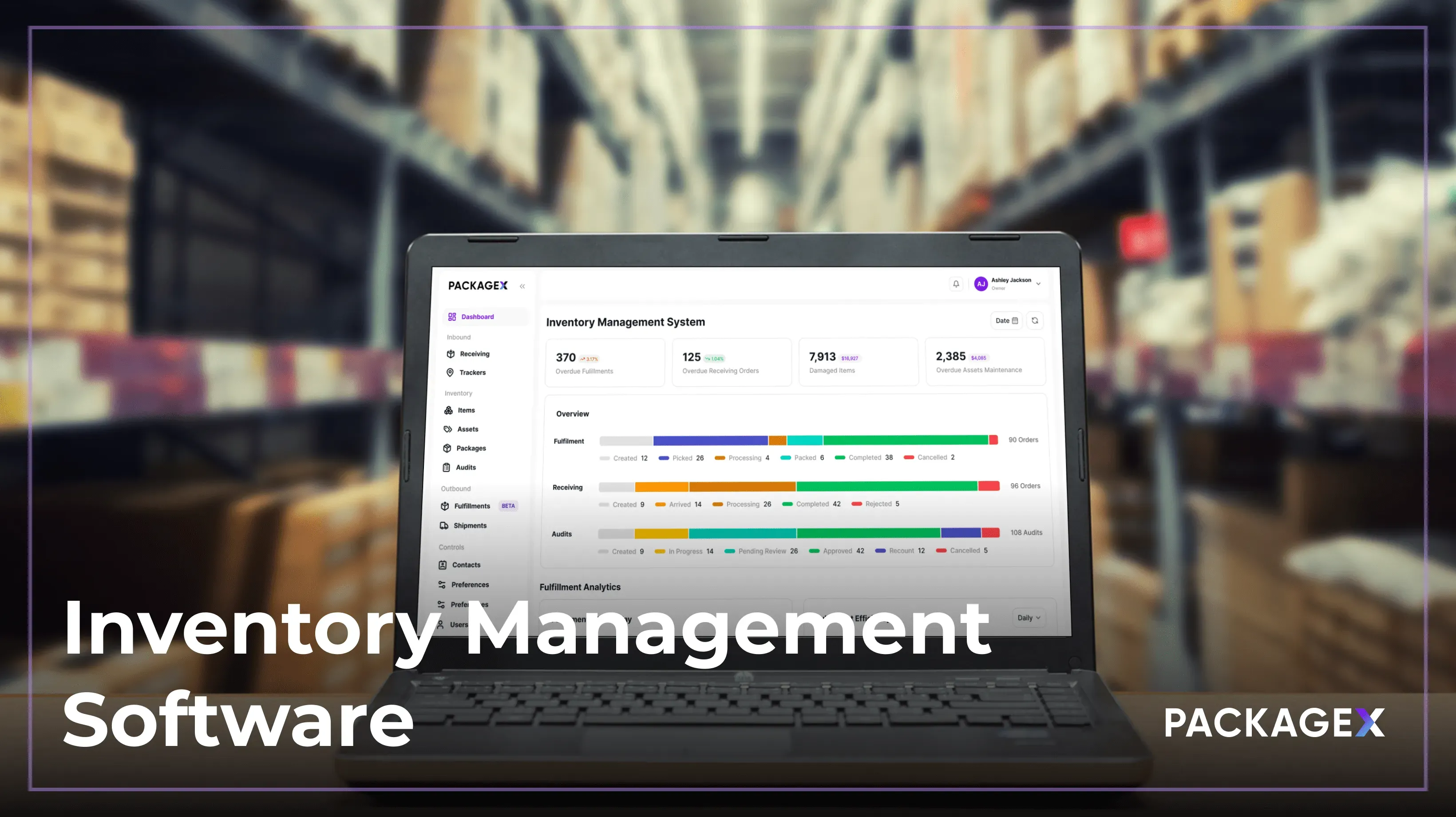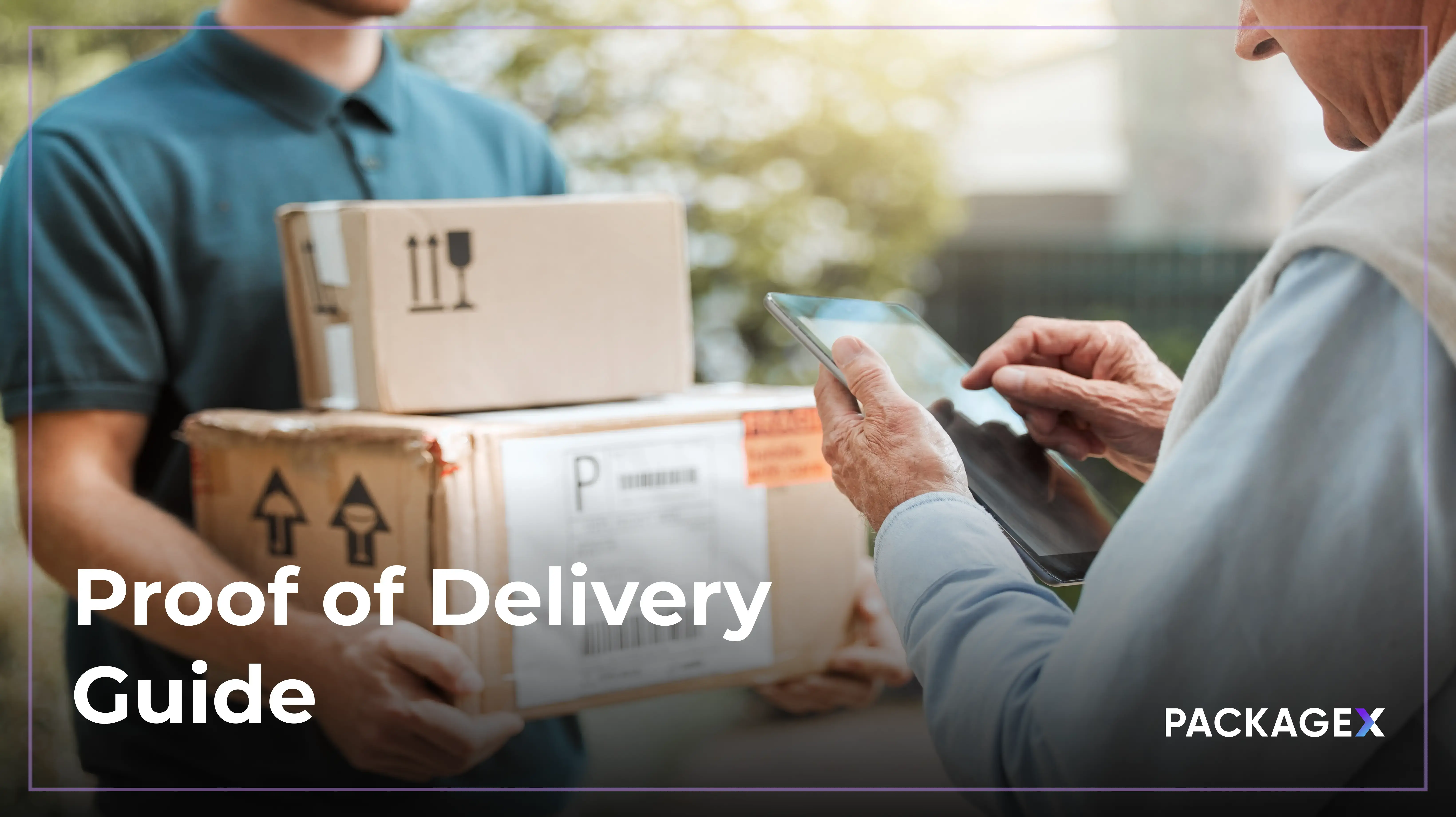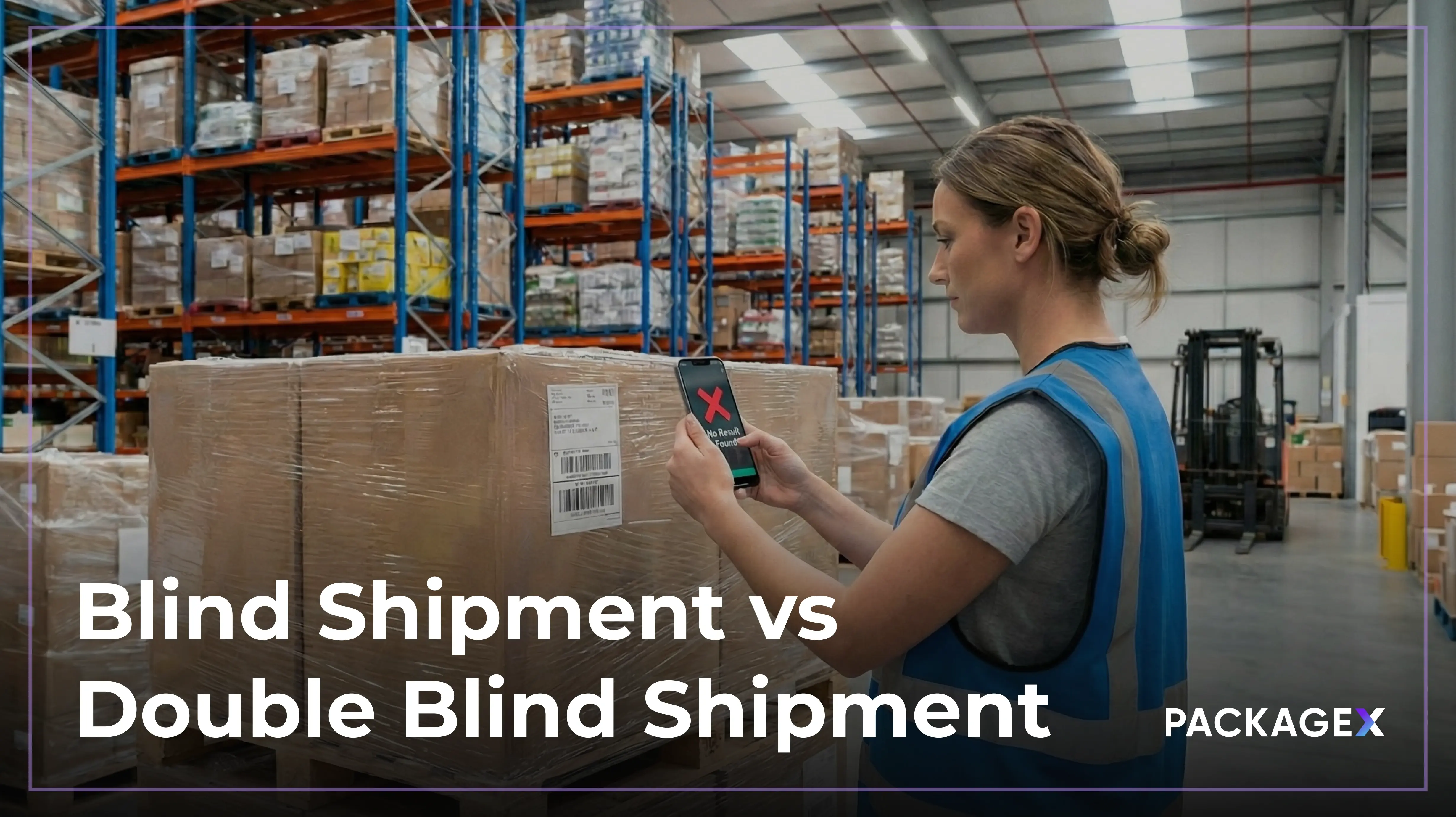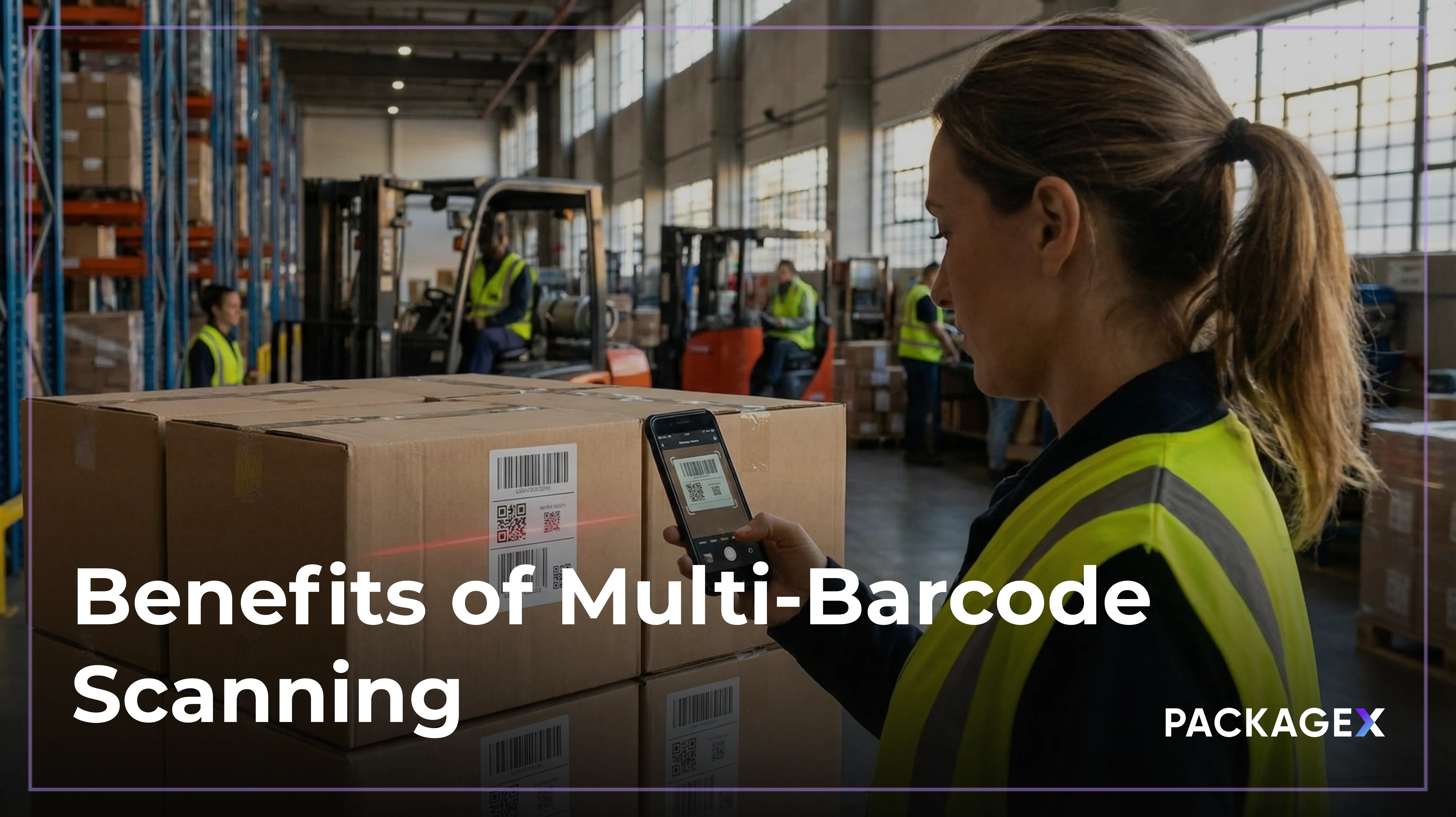In the modern corporate world, it is imperative to have speed, accuracy, and inventory visibility. As supply chains become increasingly complicated, accurate inventory control has become a critical operational requirement across industries.
In industries like retail, e-commerce, and manufacturing, these gaps often show up fast. Products may be listed as available when they’re not. Warehouse management might carry surplus stock that ties up capital. In many cases, teams spend more time correcting these mistakes than moving work forward.
That’s where modern systems play a role. Purpose-built inventory software gives teams a clear view to run operations well. It replaces and reduces manual entry, making key processes easier to manage at scale.
As more companies invest in real-time tools, the market is flourishing. The global inventory management software sector is projected to hit USD 4.79 billion by 2032, growing at a rate of 9.6% annually.
In this blog, we break down the structure and function of an inventory management system.
What Is Inventory?
Before looking at how inventory is managed, it helps to define inventory itself. In business, inventory includes all goods, materials, and supplies. A company keeps these items in stock to meet demand and keep operations running.
Accurate inventory tracking is essential for visibility across all these categories. Most companies group inventory into the following types:
Raw materials and components
These are the basic inputs used to create a finished product. In a food manufacturing example, raw materials could be ingredients, packaging, and any other components needed for production.
Work-in-progress (WIP)
WIP refers to items currently being assembled, processed, or packaged. Managing WIP with simple inventory management software can reduce waste, lower costs, and improve lead times.
Finished goods
Completed products are ready for sale or distribution. They have passed quality checks, packaged the products, and prepared them for delivery to customers or resellers.
Maintenance, repair, and operating supplies (MRO)
Items that help with production and delivery but are not part of the final product. It contains tools, spare parts, and cleaning supplies.
Safety stock
Extra inventory is held to protect against unexpected demand spikes or supply delays. This buffer reduces the risk of stockouts and supports consistent order fulfillment.
What is Inventory Management Software?
Inventory management software is a digital system. That helps businesses track, control, and optimize stock across locations. Companies often provide it as cloud-based software for inventory management.
It automates important tasks like updating stock, tracking orders, and generating reports. This improves accuracy, reduces waste, and supports operational efficiency.
A well-designed inventory management solution provides real-time visibility into inventory movement. It integrates with tools such as point-of-sale, accounting, and e-commerce platforms to streamline supply chain operations.
[video:https://www.youtube.com/watch?v=VFUVrtqRrls]
Key Features of Inventory Management Software
The best inventory software should offer these essential features. These are the main capabilities to look for when selecting a platform.
Real-Time Inventory Tracking
A reliable system reveals stock status in real time across all locations. It records SKU quantities, tracks product movements, and keeps your team aligned. Using a real-time inventory management software setup ensures accuracy.
Automated Order Management
Order workflows handle sales and purchase orders from start to finish. It provides order fulfillment updates, ensuring each channel displays correct counts. It reduces overselling and removes the need for manual updates.
Stock Alerts
Automated alerts are triggered when inventory falls below a set point. This helps prevent stockouts and keep inventory turnover steady.
Demand Forecasting
Historical sales data is analyzed to predict future needs. This avoids overstocking low-demand items and understocking high-demand products.
Reporting and Analytics
Dashboards track turnover rates, shrinkage, and sales trends. Insights from reports help guide purchasing and inventory planning decisions.
Barcode Scanning and Counting
An inventory management software with a barcode scanner speeds up receiving, pick and pack fulfillment, and cycle counts. AI scanning improves accuracy and reduces human error.
System Integration
Connections with accounting software, CRM platforms, and e-commerce channels eliminate double entry. Integration keeps data synced across the business.
Cloud and Mobile Accessibility
With easy cloud-based inventory management software, managers can check stock, approve orders, and review reports from anywhere.
Selecting software with these features turns inventory into a competitive asset. The next section will explain how these systems work in practice.
How Does Inventory Management Software Work?
An effective inventory management system serves as the control hub for stock operations. It processes data in real time and delivers clear insights, enabling quick and accurate decision-making.
There are two main architectures:
- Cloud-based inventory management software (also called web-based inventory management software) stores data on secure remote servers. This allows access from any device with an internet connection, making it ideal for multi-location teams.
- On-premise systems store data on your own servers. These offer more direct control but require more in-house IT resources.
How it works in practice:
- An order is created through your website or POS.
- The system updates stock counts instantly, so every team works with accurate numbers.
- If stock levels drop below a set threshold, automatic reorder rules can generate purchase orders.
- Warehouse teams scan or log incoming stock, updating availability in real time.
- This can scan and record returns, damaged goods, and manual adjustments to keep data consistent.
- Built-in reporting tools track sales trends, turnover rates, and inventory value. This allows managers actionable insights for purchasing and forecasting.
When implemented well, this workflow ensures accuracy and keeps operations running smoothly.
How to Use Inventory Management Software?
Getting value from the best software for inventory management starts with a structured setup and consistent daily habits.
Here is a six-step framework to follow.
1. Onboard and Configure
Select software for inventory management that matches your operational needs. Begin by adding accurate product details such as SKUs, descriptions, quantities, and storage locations. Include supplier contacts and pricing to make reordering easier.
2. Integrate and Sync
Connect the system with sales channels and accounting tools so each transaction automatically updates stock levels. This eliminates duplicate data entry and improves accuracy across the business.
3. Manage Daily Operations
Use the inventory software management dashboard to receive stock, fulfill orders, and process returns. Scanning items during receiving or packing ensures real-time inventory updates.
4. Audit and Adjust
Schedule regular inventory counts to verify data accuracy. Enter adjustments directly into the software to correct discrepancies before they create bigger problems.
5. Monitor KPIs and Forecast
Track stock turnover, supplier lead times, and pick and pack fulfillment rates. Use forecasting tools to predict demand, plan purchases, and avoid both overstocking and stockouts.
6. Optimize and Scale
As your business grows, refine workflows, add automation rules, and expand integrations to new channels or warehouses. Continuous optimization ensures your system keeps delivering ROI.
With the right process in place, inventory management software becomes a central control hub for efficient operations.
IMS Integration and Compatibility
An inventory management system delivers the best results when it works with your other business tools. Top-performing inventory management software seamlessly integrates with:
- Point-of-sale systems are used to ensure retail sales and inventory levels remain aligned.
- ERP platforms for unified financial and operational data.
- E-commerce platforms like Shopify and BigCommerce for real-time online updates.
Why integration matters:
- For retail: Retail inventory management software linked to a POS updates stock levels right after each sale. It uses scan-to-count features to replace manual counts.
- For E-commerce: Connecting inventory management software to marketplaces and shipping tools keeps product availability accurate. This reduces the risk of overselling.
- For multi-location businesses: Integrated systems update all branches or warehouses at once, preventing mismatched inventory records.
Benefits of cloud connectivity:
- Use modern tools like cloud-based inventory management software to sync data in real time across all locations.
- Deliver one accurate inventory source to purchasing, sales, and finance teams.
- Improve demand forecasting, automate reorder points, and speed up reporting.
What to look for in an IMS integration:
- Open API access for custom connections.
- Pre-built integrations for faster setup.
- Analytics that highlight best-selling items, slow movers, and supply chain management gaps.
Without integration, your inventory management system is limited. With it, you build a connected network that grows with your business and adapts as you add new sales channels.
Benefits of Using Inventory Management Software
For growing companies, choosing the right inventory management software for small businesses is a direct path to improving operations.
The following are proven benefits of inventory management:
Reduced Costs
- Lower Inventory Carrying Costs: Cloud-based inventory management software helps prevent overstocking. It tracks demand patterns and shows slow-moving products. This reduces storage fees and waste.
- Reduced Labor Costs: Automating cycle counts, order processing, and reporting frees up staff from manual tasks. This lets them focus on more important activities like sales and customer service.
- Minimize Losses: Accurate tracking in small business inventory management software helps avoid lost sales from stockouts. It also reduces spoilage and shrinkage.
Improved Customer Service
- Accurate Order Fulfillment: Real-time data from online inventory management software ensures efficient order fulfillment. i.e, deliver the right products to customers on time.
- Reduced Stockouts: Demand forecasting in inventory management software cloud-based solutions keeps shelves stocked with in-demand items.
- Faster Order Processing: Automated workflows speed up fulfillment, improving delivery times and customer satisfaction.
Enhanced Operational Efficiency
- Automated Tasks: The best inventory management software takes care of routine tasks. It handles purchase orders, inventory control, and sales updates automatically.
- Data-Driven Decisions: Built-in analytics reveal sales trends, optimal reorder points, and pricing opportunities.
- Improved Inventory Visibility: Multi-location businesses gain a clear, unified view of stock levels across all locations.
Scalability and Integration
- Flexible Growth: Modern solutions expand to support more products, locations, and sales channels without sacrificing speed or accuracy.
- System Integration: Many platforms connect with accounting, CRM, and ecommerce tools for a single source of operational truth.
Types of Inventory Systems
Different businesses require different inventory tools. The inventory management software best suited for your operation depends on your industry and sales strategy.
Here are the main categories to consider:
By Industry Focus
- Warehouse Inventory Management Software: Designed for large storage facilities. This category focuses on optimized layout, barcode scanning, tracking, and fast picking.
- Best Restaurant Inventory Management Software: Built for the food and beverage sector. These systems track ingredient usage, manage recipes, monitor expiration dates, and integrate with POS systems to reduce waste.
- Retail Inventory Management Systems: These tools help physical stores manage stock on shelves and in backrooms. It offers real-time tracking, demand forecasting, and POS integration for accurate reporting.
- E-commerce Inventory Management Systems: Tailored for online sellers, these systems sync stock with marketplaces and online stores. They update inventory automatically as sales happen.
- Multichannel Inventory Management Systems: Manage stock across physical stores, e-commerce platforms, and marketplaces from one dashboard. Useful for businesses selling through multiple channels.
By System Type
- ERP Inventory Management Systems: Part of a larger ERP platform. They connect inventory to finance, sales, and supply chain operations.
- On-Premise Inventory Systems: Installed locally, offering more control but higher setup and maintenance costs.
- Cloud-Based and Web-Based Inventory Systems: The top inventory management software today allows remote access. It provides real-time updates and easy integration with CRM and ERP tools.
Other Industry-Specific Options
- Manufacturing-focused systems for raw materials and work-in-progress tracking.
- Wholesale distribution systems for large-volume purchasing and order fulfillment.
Selecting the right system starts with mapping your operational needs to features that can scale with your business.
Who Should Use Inventory Management Software?
The following types of businesses can benefit most from inventory management software:
- Retailers
Retail inventory management software helps brick-and-mortar and online stores monitor stock levels, manage orders, and avoid overselling. Real-time updates ensure customers can buy what they need without delays. - Distributors
Centralized tracking makes it easier to manage inventory across multiple locations. An IMS boosts order accuracy, accelerates fulfillment, and ensures timely deliveries. - Manufacturers
These systems track raw materials and coordinate work orders. It makes sure production has the right parts when needed. This reduces downtime and waste. - E-commerce Businesses
E-commerce inventory management software keeps sales channels like Amazon, Shopify, and eBay in sync. This improves order fulfillment speed and reduces listing errors. - Warehouses
An IMS optimizes warehouse management. It improves storage space, tracks stock movement, and coordinates incoming and outgoing shipments more efficiently. - Businesses with Multiple Locations
A centralized view of inventory improves coordination, reduces stockouts, and streamlines transfers between sites. - Growing or Complex Operations
Small business inventory management software grows with demand. It makes it easier to track different products, many suppliers, and changing demand.
Choosing the right system now can prevent larger operational issues later.
How to Choose the Right Inventory Management Software?
The process of comparing the best inventory management software can easily overwhelm you with spec sheets and sales pitches. The right choice comes down to matching features and flexibility with how your business actually runs.
Here’s a practical way to narrow the list of top inventory management software options.
1. Build a features checklist
Start with your non-negotiable features. For most businesses, that includes:
- Real-time stock tracking across all locations.
- QR code or barcode scanning.
- Automated reordering alerts.
- Reporting and analytics you’ll actually use.
- Multi-user access with role permissions.
If you sell on multiple channels, add integrations for e-commerce platforms, marketplaces, or POS systems to your list.
2. Check scalability and integration
If your business doubles in size, will the software keep up?
- Look for open API features.
- Ensure easy integration with accounting or ERP systems.
- Check that the database remains fast as the number of records grows. Compatibility with existing tools is just as important as the core features.
3. Take advantage of free trials and demos
No matter how polished the marketing, hands-on testing is the fastest way to spot workflow gaps. Have your team run a week’s worth of orders, receiving, and adjustments in the trial to see if it fits their daily habits.
Choosing the right inventory software management solution is about selecting a platform that removes bottlenecks and scales with you.
Why PackageX Inventory Management Software is the Ideal Choice?
PackageX delivers more than basic inventory tracking. It helps businesses to grow. Additionally, it allows them to monitor activities in real-time. PackageX provides solutions that are suitable for all locations and sales channels.
Why it’s the right choice for modern inventory management:
- Improves accuracy and reduces manual work with automated, real-time inventory tracking.
- Scales with your business, from small teams to enterprise-level warehouse inventory management software needs.
- Integrates seamlessly with POS, e-commerce, and ERP platforms for unified data and smoother workflows.
- Offers secure, cloud-based access so teams can manage inventory from anywhere.
- Delivers actionable analytics to optimize purchasing, replenishment, and forecasting.
PackageX inventory management software gives you control, clarity, and the flexibility to adapt quickly.
FAQs on Inventory Management Software
What is the most common method of inventory management?
The perpetual inventory system is the most widely used approach because it updates stock records in real time. Modern inventory management software gives businesses a clear view of stock levels, sales, and reorders. This helps them make quick, data-driven decisions without needing to do manual counts.
What is the ABC method of inventory management?
ABC analysis organizes inventory into three categories based on value and usage.
- “A” items are very valuable and need careful tracking.
- “B” items have moderate value.
- “C” items are low in value but usually high in quantity.
This method helps companies focus resources where they have the most impact.
What is EOQ in inventory management?
EOQ, or Economic Order Quantity, is a formula used to determine the optimal number of units to order. It balances holding costs with ordering costs to avoid overstocking or running out. Many cloud-based inventory management software solutions automate EOQ calculations for better efficiency.
How to get the ending inventory?
Ending inventory is calculated using the formula:
Beginning Inventory + Purchases – Cost of Goods Sold (COGS)
Using tools like PackageX inventory management software makes this process quick and accurate. This helps keep your reports and forecasts reliable.
What is an SKU in inventory?
An SKU, or Stock Keeping Unit, is a unique code assigned to each product for identification and tracking. In multi-channel inventory management software, SKUs keep product data consistent across sales channels, warehouses, and marketplaces.




